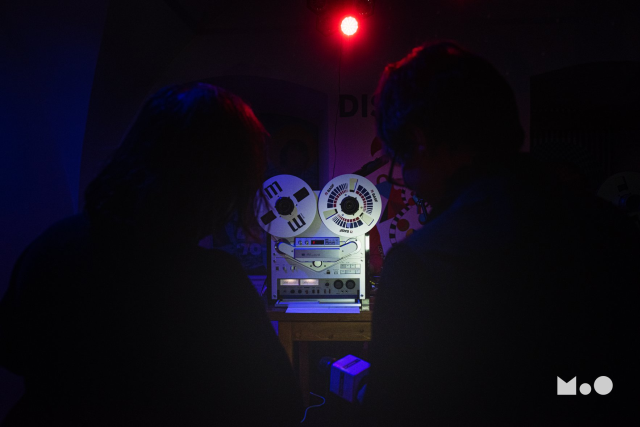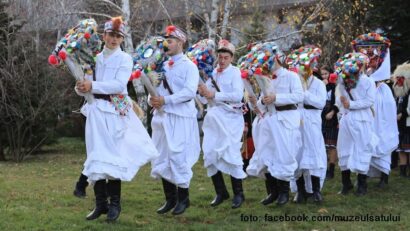Discos in the ’70s and ’80s
Over 200 people from the city of Oradea attended the inauguration of the Permanent Exhibition Discos in the '70s and '80s

Ana-Maria Cononovici, 07.07.2020, 13:23
Over 200 people from the city of Oradea attended the inauguration of the Permanent Exhibition Discos in the 70s and 80s. This was a trip back in time, in order to find out how youth in Romania in the 70s and 80s spent their free time at the discotheque. This landscape was populated by cassette tapes, reel-to-reel players, and vinyl, and was regulated by the secretive Committee for Visual and Audio, which was the deciding factor when it came to what one could see or listen to in such a space.
Cristina Puscas, a museographer, told us that the idea behind the exhibition came after a few donations were made to the museum, after which came a period of extensive research:
“We started in September 2016 the campaign Dont throw away the future, bring it to the museum!. As a result, dozens of people from Oradea got actively involved in this campaign of collecting items from the communist period, and among the thousands of donated objects we found loads of vinyl records, reel-to-reel players, tapes, and we found ourselves in possession of a wide array of stuff typical of discos of that period. We thought we could take advantage of this collection, instead of putting it in storage. This is how we got the idea of this exhibition complex. We started off on the idea that there hasnt been such research before, trying to see how discos were organized in the communist period. In the pre-research period, I could find no official regulation for the functioning of discotheques. Therefore I went to the archives, and found the archives of the Bihor County Committee for Culture and Socialist Education. There we found a few regulations related to discos, based on a few orders from the central authority, what the Committee for Visual and Audio was, what censorship was like, and what the restrictions were like. But we were not satisfied with this single voice, that of public institutions, and so we went to stage two, interviewing Oradea DJs who worked in discos in the 70s and 80s. This was how this disco was born, which blends a real disco with an exhibition full of items, photos, etc.
Discotheques were organized in cultural houses, culture and education clubs, bars, restaurants and other public food places, hotels, or resorts. They had to comply with the so-called Norms on the organization of discotheque and videotheque schedules. A disco could only work based on an annually issued permit from the Bihor County Committee for Culture and Socialist Education. That was obtained only after the Committee for Visual and Audio itself issued in writing their opinion on the content of the schedule and the appropriateness of its public presentation. The schedules, in the 80s, had to contain at least 2/3 Romanian music pieces of the total.
We asked Cristina Puscas what the experience is for the museum goer in terms of encountering the socialist environment:
They go inside a typical discotheque, with the mirror ball, the strobes, colorful lights, and black lights. We added to the exhibition objects such as vinyls from that period, with music from that time, and several reel-to-reel tape players, record players, and old photos of DJs who used to work here, which they donated to the museum. There isnt much documentary material on this topic, because they didnt take their own photos, they had no idea that at some time in the future someone would look into the history of this community. We also have songs handwritten by youth in the 70s, we have love letters in which they told each other what they listened to, or newspaper cuttings they made. These are original materials, and we are very proud of this very rich documentary base, and rich inheritance.
We then asked Cristina Puscas about the venue of the exhibition:
It is in Oradea Fortification, where we also have the Oradea City Museum, on two floors. On the second floor we found a proper room. It is one of the most beautiful rooms, and that is where we set the disco. It proved too cramped at the inaugural event, once the dancing started people couldnt breathe, considering that 200 people showed up, we never expected to have such success. We had a regular inauguration, but afterwards we wanted to be true to the spirit of the 70s and 80s, and we held an old fashioned disco dance. We had loads of people who came out of nostalgia, but we also had plenty of young people who came to listen to the music from back then. We were happy to have people of all generations. In the end, the work to put together this event proved very rewarding.
Functioning hours for discos were typically between two and four hours, therefore the disco exhibition promptly closed at 20:00 hours.






























